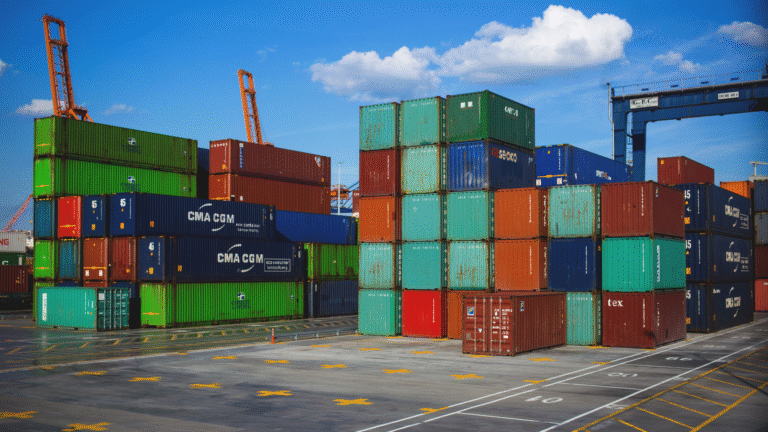Australia, known for its rich mineral resources and growing renewable energy sector, is uniquely positioned to become a key player in the global electric vehicle (EV) supply chain. While much of the focus has been on domestic adoption, a major opportunity lies in electric vehicle export opportunities for Australia. As international demand for EVs surges, Australia’s potential as a clean-energy manufacturing and export hub becomes increasingly evident. This article explores how Australia can capitalize on this trend and build a sustainable EV export economy.
Table of Contents
- EV Export Landscape: A Global Overview
- Why Australia? Competitive Advantages
- Emerging Export Markets for Australian EVs
- Domestic Challenges & How to Overcome Them
- Case Studies: Australian Companies Entering the EV Export Market
- Government Incentives & Policy Direction
- Future Outlook for Australian EV Exports
- FAQs
- Conclusion
- Meta Description
EV Export Landscape: A Global Overview
The global electric vehicle market is projected to reach $823 billion by 2030, growing at a CAGR of over 18%. Countries are rapidly phasing out internal combustion engines and introducing EV mandates. Australia can tap into this booming market not just as a supplier of raw materials, but as an exporter of fully assembled EVs, battery packs, and EV components.
Why Australia? Competitive Advantages
Access to Critical Minerals
Australia is one of the world’s largest producers of lithium, cobalt, and nickel—core ingredients in EV batteries.
- Lithium: Australia supplies over 50% of the world’s lithium.
- Nickel & Cobalt: Rich reserves ideal for battery-grade refining and production.
Renewable Energy Infrastructure
- Abundant solar and wind resources make it feasible to power EV manufacturing with clean energy.
- Opportunities to develop “green EVs” that are fully manufactured using renewables—an attractive selling point globally.
Strategic Trade Agreements
Australia holds free trade agreements (FTAs) with major economies, such as:
- Japan
- South Korea
- ASEAN nations
- UK and EU (pending final ratification)
These reduce tariffs and open the door for seamless EV exports.
Emerging Export Markets for Australian EVs
Southeast Asia
With rising urbanization and supportive EV policies, countries like Indonesia, Vietnam, and Thailand are emerging as significant EV importers.
Europe
European countries are aggressively decarbonizing transportation. Australia’s clean manufacturing could give it a unique advantage in EV exports to Germany, Netherlands, and Scandinavia.
Middle East & Africa
These regions are in the early stages of EV adoption, presenting a first-mover advantage for Australian exporters.
Domestic Challenges & How to Overcome Them
Manufacturing Capacity
Current Status: Limited to small-scale assembly and component production.
Solution: Invest in gigafactories and EV-specialized industrial zones.
Skilled Workforce
Australia needs more engineers and technicians trained in EV technologies.
- Initiatives from TAFEs and universities
- Government-funded upskilling programs
Policy & Regulatory Support
- Supportive regulations and EV-focused infrastructure are critical.
- National EV Strategy (2023) provides a roadmap, but execution is key.
Case Studies: Australian Companies Entering the EV Export Market
- SEA Electric: Assembles electric trucks in Victoria and exports to the U.S.
- ACE EV Group: Plans to manufacture EVs locally with an eye on Southeast Asian markets.
- Magnis Energy: Developing battery plants with export capabilities in NSW.
These companies showcase Australia’s growing ambition in the EV export space.
Government Incentives & Policy Direction
- Modern Manufacturing Initiative: Supports EV supply chain development.
- Critical Minerals Strategy (2022): Encourages downstream processing and value-added exports.
- Fuel Efficiency Standards (2024): Will indirectly boost the EV ecosystem.
Future Outlook for Australian EV Exports
If Australia leverages its resources, policies, and clean energy, it can become:
- A green battery superpower
- A niche EV assembler/exporter for emerging markets
- A global supplier of critical EV components
Forecast:
| Metric | 2023 | 2030 (Projected) |
|---|---|---|
| EV Component Exports | $300M | $3.5B |
| Lithium Processing | 60KT | 200KT |
| Battery Pack Exports | $120M | $2.2B |
FAQs
Q1: Can Australia really compete with China in EV manufacturing?
A: Not at scale, but Australia can lead in niche EVs, battery components, and green manufacturing.
Q2: Are there any Australian-made EVs?
A: Yes, companies like ACE EV and SEA Electric produce vehicles locally, mainly for export and fleet use.
Q3: What’s the role of renewable energy in EV exports?
A: It gives Australia a competitive edge by enabling the production of “green EVs” with a low carbon footprint.
Q4: Is the Australian government supporting EV exports?
A: Yes, through initiatives like the Modern Manufacturing Strategy and Critical Minerals Strategy.
Q5: How soon can Australia become a major EV exporter?
A: With the right investments, significant export milestones could be achieved by 2030.
Conclusion
Australia stands at a pivotal crossroads in the global EV revolution. With abundant critical minerals, access to renewable energy, and rising manufacturing capabilities, the country has all the ingredients to thrive in the electric vehicle export market. By investing in infrastructure, skills, and innovation, Australia can become not just a consumer—but a global exporter of sustainable transport solutions.
✅ Call to Action:
Stay informed about Australia’s EV transformation—subscribe to our newsletter or follow us on social media for updates on local innovation, policy shifts, and global EV trends.
Meta Description
Explore electric vehicle export opportunities for Australia, including emerging markets, policy support, and the nation’s competitive edge in EV manufacturing.
